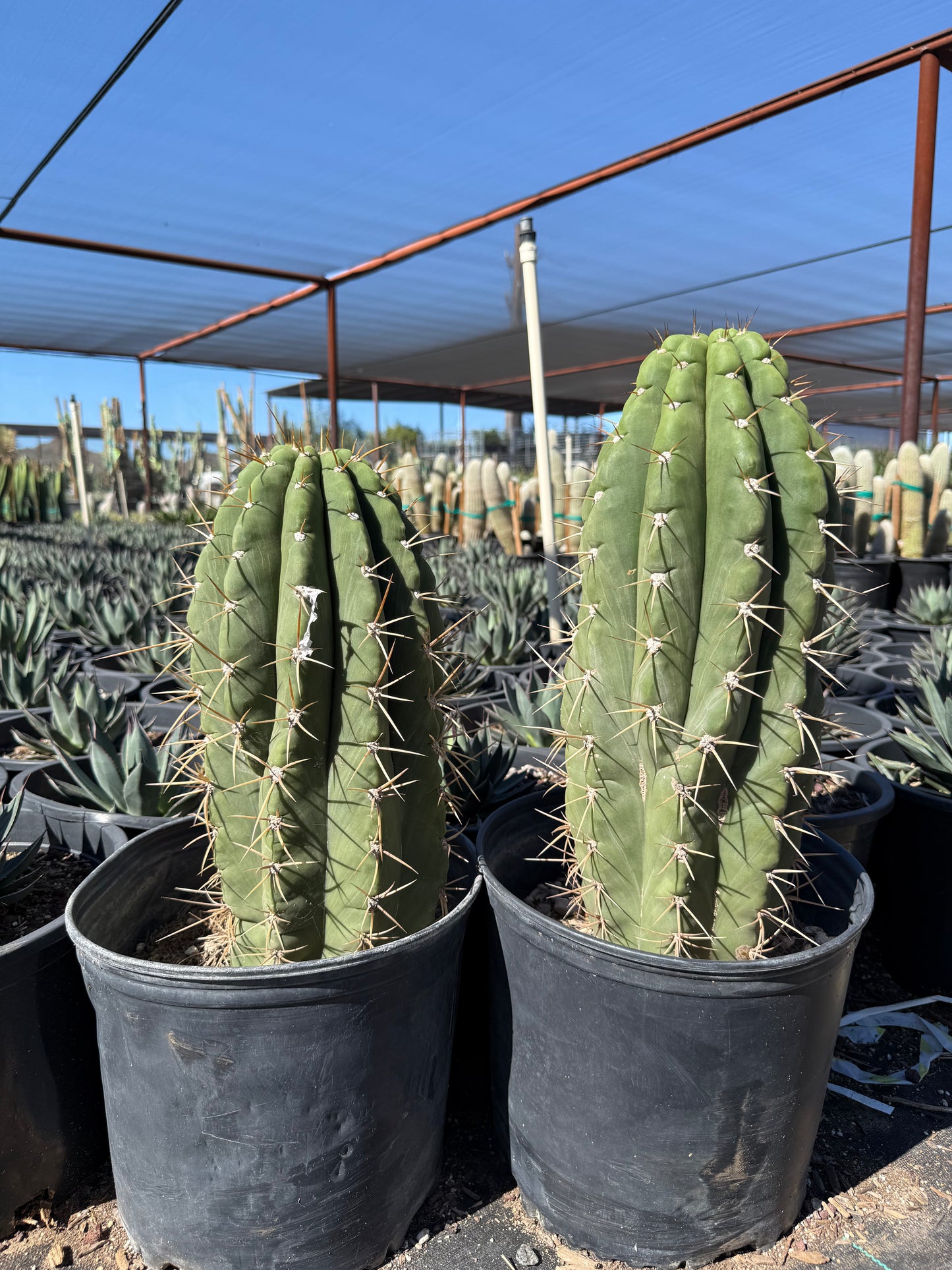My Store
Golden Saguaro
Golden Saguaro
Couldn't load pickup availability
Plant Type: perennial, columnar cactus (tree-form)**
Plant Height: 10–20 feet (can reach up to 25 feet in maturity)**
Spread: 4–6 feet
Flower Color: creamy white to pale yellow
Sun Exposure: Full sun
Golden Saguaro / Neobauxbaumia polyphylla: The Rare Golden Giant of the Desert Garden
Neobauxbaumia polyphylla, commonly known as the Golden Saguaro, is a majestic and uncommon columnar cactus native to the arid regions of central and southern Mexico. Though not a true saguaro (Carnegiea gigantea), its tall, upright form and warm golden-green coloration make it one of the most regal and impressive desert specimens available. Perfect for Arizona landscapes, this species provides vertical structure, refined texture, and timeless desert character while thriving in the intense sun and heat of the Southwest.
Key Features of Neobauxbaumia polyphylla
The Golden Saguaro forms tall, cylindrical columns with smooth, shallow ribs and a radiant golden-green hue that glows under sunlight. The skin has a slightly waxy surface that helps conserve moisture, and small areoles along the ribs produce short, soft, golden spines that give the cactus a luminous appearance. Mature plants can develop multiple arms from the base or mid-column, creating an elegant, branching silhouette similar to traditional saguaros but with finer texture. In late spring to summer, large, creamy-white to pale yellow tubular flowers emerge near the top of the stems, opening in the evening and attracting pollinators like bats and moths. These blooms are followed by small, elongated fruits that add further visual interest.
Growing and Care Tips
Neobauxbaumia polyphylla thrives in full sun and sharply draining, sandy or rocky soil. It excels in the Phoenix Valley’s bright, hot, and dry environment, tolerating reflected heat and intense sunlight with ease once established. This species should be planted in a mound or raised bed to improve drainage. Water deeply but infrequently—only after the soil is completely dry. Overwatering is the primary cause of failure, as the plant is highly adapted to dry conditions. It is hardy to around 25°F but should be protected during extended or hard freezes. Growth is moderately fast for a columnar cactus, especially in warm, dry conditions. In containers, it should be planted in a deep pot with a gritty cactus mix and excellent drainage.
Landscaping Uses
The Golden Saguaro is a commanding focal plant for large-scale Arizona landscapes, offering vertical drama and classic desert appeal. It pairs beautifully with silver and blue agaves, Golden Barrel Cactus (Echinocactus grusonii), and low-growing succulents like Blue Elf Aloe or Mangave ‘Aztec King.’ Use it as an architectural anchor in modern desert designs, as a dramatic entryway specimen, or in groupings with other columnar cacti for layered height and texture. Its golden tones contrast beautifully with red rock, dark gravel, or decomposed granite backdrops.
Summary
Neobauxbaumia polyphylla (Golden Saguaro) is a rare and breathtaking cactus that embodies the grandeur of desert landscapes. With its smooth golden-green columns, glowing spines, and tall, upright stature, it provides structure and elegance in any arid setting. Exceptionally drought-tolerant and low-maintenance, it stands as a living sculpture of endurance and beauty—ideal for collectors, designers, and anyone seeking a statement piece for Arizona gardens.
Three Timbers Installation Guide (Feel Free to Follow):
Neobauxbaumia polyphylla Planting Guide:
Location: Full sun; ideal for open exposures with at least 8 hours of direct sunlight daily. It tolerates reflected heat and thrives in warm, dry conditions.
Soil: Use a sharply draining cactus mix blended with decomposed granite, sand, or pumice. Avoid dense or organic soils.
Spacing: Allow 6–8 feet from other large plants or structures to showcase its full vertical form.
Planting Depth: Keep the root crown level with or slightly above the soil surface to prevent moisture buildup at the base.
Support: Young plants may need temporary staking until roots anchor; mature specimens are naturally stable.
Watering Guide:
Watering After Planting: Water deeply once after installation to settle the soil. Then let the soil dry completely before watering again. During establishment (first 3–4 months), water every 14–20 days depending on temperature and drainage.
When is the Plant Established? Neobauxbaumia polyphylla is considered established after 8–12 months, when new tip growth and color deepening are visible.
Watering Once Established: Water sparingly—every 4–6 weeks during hot, dry weather. Withhold water during cooler months or when soil remains moist from rain.
Drip Irrigation Setup: Install one low-flow emitter (1 gallon per hour) about 12–18 inches from the base. Run infrequently and only long enough to soak the root zone thoroughly.
General Watering Tips: Always confirm soil dryness before watering again. Overwatering is the most common cause of decline. A decorative top dressing of gravel or decomposed granite enhances drainage, stabilizes soil temperature, and highlights the cactus’s golden glow—keeping material several inches away from the base for airflow and long-term health.
Share


















